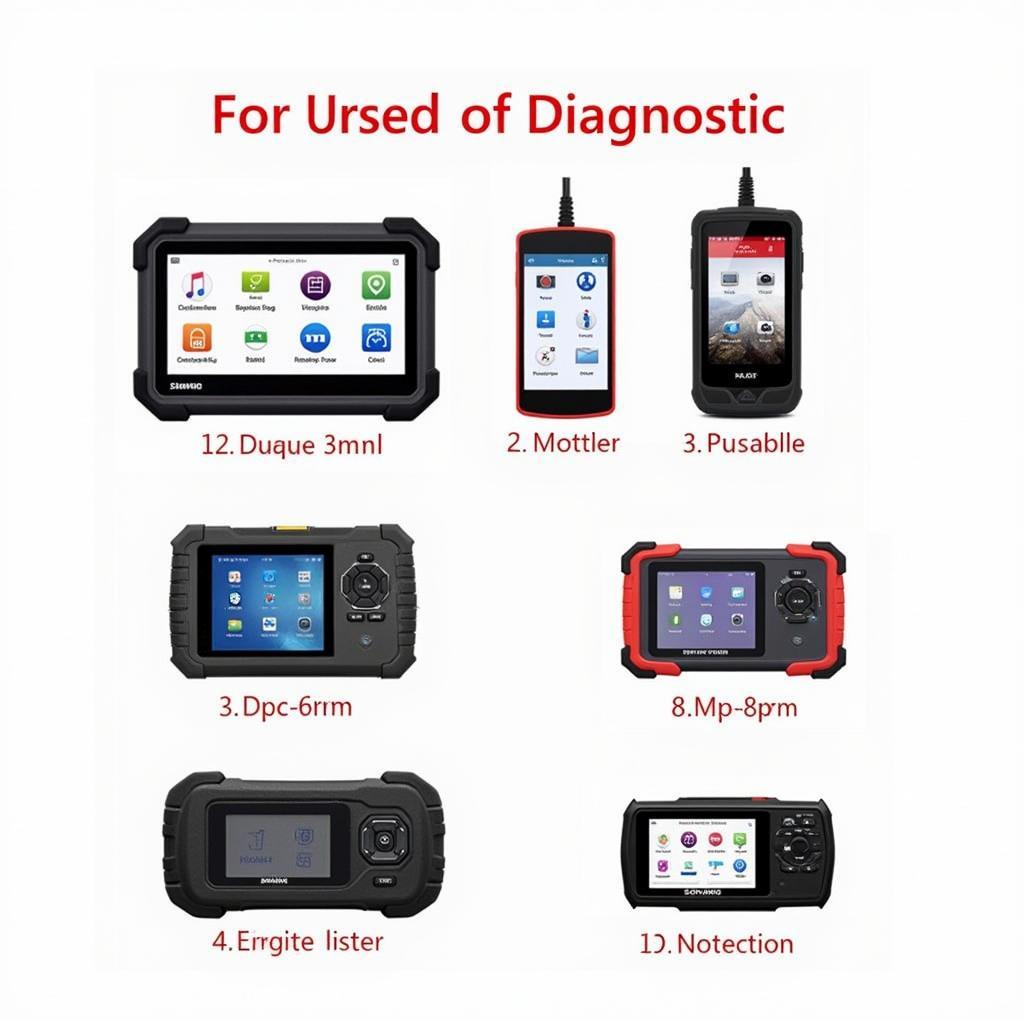The evolution of automotive technology has led to increasingly complex vehicles, with intricate electronic systems controlling everything from engine performance to safety features. Diagnosing faults within these systems requires sophisticated equipment, hence the rise of the Multi System Car Diagnostic Tool. This guide delves into the world of these essential tools, exploring their capabilities, benefits, and key factors to consider when choosing one.
The Power of Multi System Diagnostic Tools
Gone are the days of simple code readers. Today’s vehicles demand a comprehensive approach to diagnostics, and that’s where multi system car diagnostic tools shine. These advanced devices act as a window into your car’s various electronic control units (ECUs), providing a wealth of information about the health and performance of different systems.
Unlike single-system tools, multi system diagnostic tools can communicate with a wide range of ECUs, including:
- Engine Control Module (ECM): This module governs vital engine functions like fuel injection, ignition timing, and emissions control.
- Transmission Control Module (TCM): Responsible for automatic transmission shifting, torque converter lockup, and other transmission-related functions.
- Anti-lock Braking System (ABS): This crucial safety system prevents wheel lockup during braking, ensuring vehicle stability.
- Airbag Control Module (ACM): Manages the deployment of airbags and seatbelt pretensioners in the event of a collision.
- Body Control Module (BCM): Controls various body functions such as power windows, central locking, and lighting.
 Mechanic Using a Multi System Diagnostic Tool
Mechanic Using a Multi System Diagnostic Tool
Key Advantages of Multi System Diagnostic Tools
Investing in a multi system car diagnostic tool offers several significant advantages for both car owners and professionals:
- Comprehensive Diagnostics: Identify issues across multiple vehicle systems, eliminating the need for separate tools and saving time and money.
- Accurate Fault Detection: Pinpoint the root cause of problems with greater accuracy, leading to more effective repairs.
- Enhanced Repair Efficiency: Streamline the diagnostic process, allowing mechanics to diagnose and repair issues more quickly.
- Cost Savings: Avoid unnecessary repairs and reduce labor costs by identifying the exact problem areas.
- Preventative Maintenance: Monitor system performance over time, enabling proactive maintenance and preventing potential issues.
- Increased Resale Value: A well-maintained vehicle with a documented service history commands a higher resale value.
Choosing the Right Multi System Car Diagnostic Tool
Navigating the vast market of car diagnostic tools can be daunting. Here are crucial factors to consider:
- Vehicle Compatibility: Ensure the tool supports the make, model, and year of your vehicle, especially if dealing with newer cars equipped with advanced technology.
- Software Features: Look for tools offering functionalities like live data streaming, bi-directional control (allowing you to command certain vehicle functions), and advanced coding capabilities.
- User Interface: Opt for a tool with an intuitive and user-friendly interface for easy navigation and data interpretation.
- Update Frequency: Regular software updates are essential to keep pace with evolving vehicle technology and ensure compatibility with newer models.
 Variety of Multi System Car Diagnostic Tools
Variety of Multi System Car Diagnostic Tools
Beyond Diagnostics: Additional Benefits
Many multi system car diagnostic tools go beyond basic diagnostics, offering features that enhance the overall user experience. These can include:
- Technical Support: Reputable manufacturers provide access to technical support and online resources to assist with troubleshooting and tool utilization.
- Training Materials: Some tools come bundled with training materials, tutorials, and FAQs to help users maximize the tool’s capabilities.
- Community Forums: Online forums and communities dedicated to specific tool brands provide a platform for users to share knowledge, seek advice, and discuss troubleshooting tips.
 Accessing Advanced Features on a Laptop
Accessing Advanced Features on a Laptop
Conclusion
Multi system car diagnostic tools are indispensable for effectively diagnosing and repairing today’s technologically advanced vehicles. From comprehensive diagnostics to enhanced repair efficiency, the benefits are undeniable. By understanding the capabilities, features, and factors to consider when selecting a tool, both car owners and professionals can make informed decisions that empower them to keep their vehicles running smoothly for years to come.
FAQs
1. Do I need a multi system car diagnostic tool if I have a new car?
While newer cars often come with sophisticated onboard diagnostic systems, a multi system car diagnostic tool offers deeper insights, more detailed information, and often, the ability to access manufacturer-specific codes and data that the onboard system might not display.
2. Can I use a multi system car diagnostic tool to diagnose problems with my motorcycle?
Generally, multi system car diagnostic tools are designed for four-wheeled vehicles. However, there are specialized diagnostic tools available for motorcycles.
3. What is the difference between OBD-II and a multi system car diagnostic tool?
OBD-II is a standardized system that allows access to basic engine and emissions-related data. Multi system car diagnostic tools go beyond OBD-II, providing access to a wider range of vehicle systems and offering more advanced features.
For more in-depth information about specific car diagnostic needs, you can explore these relevant resources:
- Learn about the benefits of diagnostics bosch car service.
- Explore the factors influencing the cost of car diagnostic machine.
- Understand the functionalities of an obd car diagnostic kit.
- Discover the importance of an obd2 adapter car diagnostic cable connector for compatibility.
- Find insights into encore car diagnostic solutions.
Need expert assistance with car diagnostics or finding the right tool? Contact our team via WhatsApp at +1(641)206-8880 or email us at [email protected]. Our 24/7 customer support is here to help.

Leave a Reply